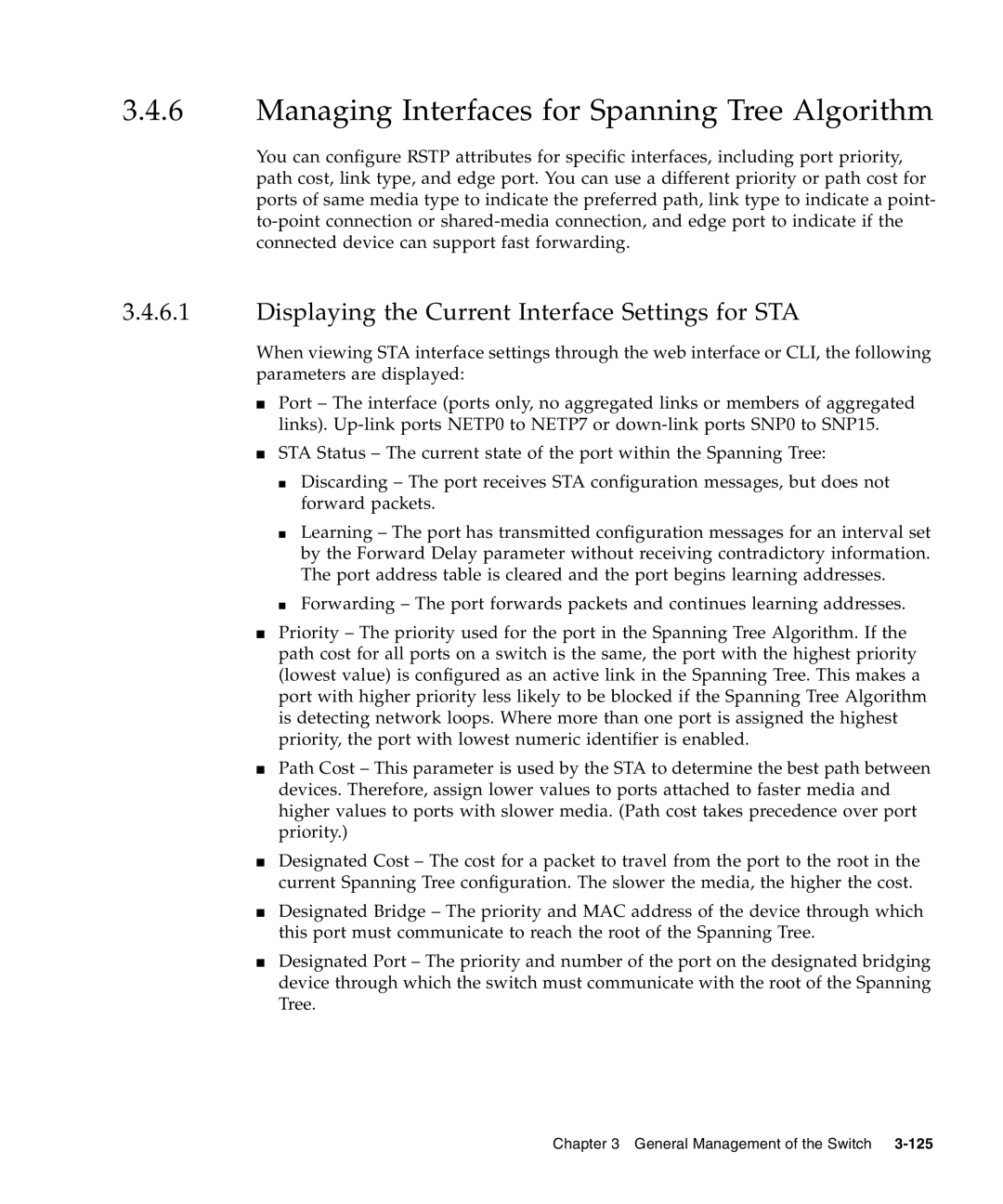3.4.6Managing Interfaces for Spanning Tree Algorithm
You can configure RSTP attributes for specific interfaces, including port priority, path cost, link type, and edge port. You can use a different priority or path cost for ports of same media type to indicate the preferred path, link type to indicate a point-
3.4.6.1Displaying the Current Interface Settings for STA
When viewing STA interface settings through the web interface or CLI, the following parameters are displayed:
■Port – The interface (ports only, no aggregated links or members of aggregated links).
■STA Status – The current state of the port within the Spanning Tree:
■Discarding – The port receives STA configuration messages, but does not forward packets.
■Learning – The port has transmitted configuration messages for an interval set by the Forward Delay parameter without receiving contradictory information. The port address table is cleared and the port begins learning addresses.
■Forwarding – The port forwards packets and continues learning addresses.
■Priority – The priority used for the port in the Spanning Tree Algorithm. If the path cost for all ports on a switch is the same, the port with the highest priority (lowest value) is configured as an active link in the Spanning Tree. This makes a port with higher priority less likely to be blocked if the Spanning Tree Algorithm is detecting network loops. Where more than one port is assigned the highest priority, the port with lowest numeric identifier is enabled.
■Path Cost – This parameter is used by the STA to determine the best path between devices. Therefore, assign lower values to ports attached to faster media and higher values to ports with slower media. (Path cost takes precedence over port priority.)
■Designated Cost – The cost for a packet to travel from the port to the root in the current Spanning Tree configuration. The slower the media, the higher the cost.
■Designated Bridge – The priority and MAC address of the device through which this port must communicate to reach the root of the Spanning Tree.
■Designated Port – The priority and number of the port on the designated bridging device through which the switch must communicate with the root of the Spanning Tree.
